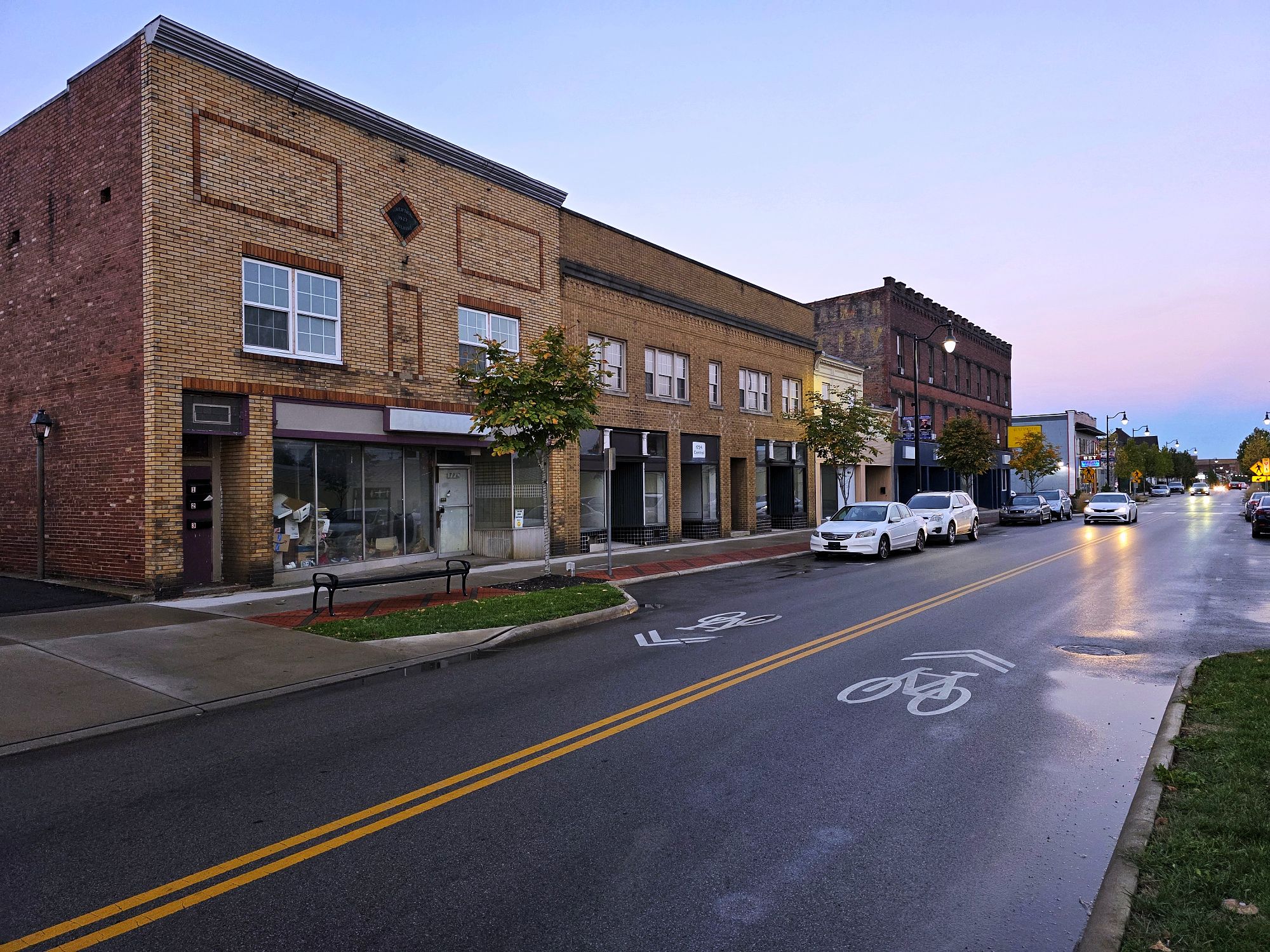A big part of the problem, they say, is that Middletown’s downtown is riddled with vacant, abandoned properties.
A Journal-News investigation found Middletown city leaders are not enforcing city ordinances meant to hold owners of downtown vacant properties accountable. Our investigation found:
• City officials are not requiring property owners to register vacant properties with the city, as required by legislation on the books since 2019. So there isn’t a full accounting of vacant downtown properties.
• The lack of enforcement means the city is foregoing potentially hundreds of thousands of dollars in fines, as well as failing to make sure buildings are meeting safety and maintenance standards.
• Some properties owned by the city itself don’t comply with the city’s own standards.
• Other Ohio cities with similar legislation are able to enforce it and have seen benefits from doing so.
Using lists obtained from the city as well as Downtown Middletown Inc. and visual inspections by reporters, the Journal-News tallied at least 86 vacant storefronts and addresses in 212 buildings in the city’s core.
VACANT MIDDLETOWN PROPERTIES
A Journal-News investigation

A Journal-News investigation found Middletown city leaders are not enforcing city ordinances meant to hold owners of downtown vacant properties accountable.
‘Enforcement gaps have existed’
At a June council meeting, Glaser-Jones expressed optimism for the future of downtown Middletown. “We still hold hope and optimism for this area, even though the downtown has not progressed the way we had envisioned,” she said.
But Vice Mayor Steve West and Councilman Paul Lolli admitted to a lack of enforcement of the city’s vacant property ordinance, which has been on the books since 2019.
“The reason we can’t do a lot of the enforcement of the vacant (properties) is because those owners … lawyered up,” Lolli said. “For us to try to recover three hundred and some thousand dollars was costing us a million dollars in legal fees.”
Credit: Nick Graham
Credit: Nick Graham
West said there are just a few individuals and groups who own the majority of downtown.
Five individuals plus the city of Middletown — which owns 3 vacant properties — own about 33% of vacant downtown properties, according to documents provided by the city of Middletown and Downtown Middletown Inc.
“There are people who buy these buildings intentionally to depreciate them on their tax portfolio,” West said. “This is no longer acceptable.”
Asked why vacant property legislation hasn’t been enforced, Middletown Communications Manager Clayton Castle said there are “several factors,” including limited staffing and resources in code enforcement; outdated administrative processes; and, at times, ambiguity in the existing code that made consistent enforcement “difficult.”
“We recognize that enforcement gaps have existed, and part of our current strategic effort is to update the code to clarify definitions, streamline processes and ensure that the legislation is not only enforceable but also effective in addressing today’s challenges,” he said.
How many vacant properties?
Though exact numbers are hard to pin down, the list of vacant downtown properties provided by the city via a public records request in July included at least 50 vacant properties; a list provided by Downtown Middletown Inc. included at least 30 additional properties.
A walking review by Journal-News staff of downtown buildings brought the total to at least 86 vacant storefronts and buildings.
In the boundaries of the downtown district, there are about 212 buildings. Some buildings have more than one address.
A review of all vacant properties found the majority are owned by Ohio landlords in Middletown, Lebanon, Franklin and Springfield.
Six of the properties are no longer vacant or are newly vacant. The majority are vacant, commercial properties not listed online for sale or rent.
What the ordinance says
Chapter 1458 of Middletown’s Code of Ordinances says property owners must register a vacant property annually with the administrative services department; submit a vacant property plan to the city’s chief building official and fire marshal; and maintain the property to certain standards.
The property plan could include demolition; security measures if the vacant property is to remain unoccupied; or rehabilitation if the vacant property will return to use.
Annual registration fees for a residential building are $200 for the first year a building remains vacant. Every following year, the fee doubles. There is a maximum annual fee of $3,200 for the fifth and all subsequent years.
For a vacant commercial building, the fees double, with a maximum annual fee of $6,400.
Credit: Nick Graham
Credit: Nick Graham
One commercial building, if left vacant for the six years since the legislation passed, would have generated in $18,800 in fees if legislation had been enforced.
Enforcement on 50 commercial buildings could have collected $940,000 in fees since 2019.
There are some exemptions to the registration:
- A building under active construction or renovation and having a valid building permit is exempt from registration fees until the expiration of the longest running, currently active building permit;
- A building which has suffered fire damage or damage caused by extreme weather conditions is exempt from registration fees for a period of 90 days after the date of the fire or extreme weather event; and
- A building for sale and listed with a licensed Ohio realtor is exempt from registration fees for a period of 12 months from the start of vacancy.
If an owner is not in compliance with any guidelines of Chapter 1458, they are subject to a minor misdemeanor charge and $100 fine, though it is not clear the max amount of charges or fines that an owner could face.
The registration fee is also meant to be paid in full before the owner can receive any building permits.
Credit: Nick Graham
Credit: Nick Graham
‘The lifeline we need’
The Economic Revitalization Committee of DMI assisted in writing the ordinance, so it was partly written by property owners, according to Jeff Payne, DMI executive director.
He said the legislation has some “deference” to property owners since it was written by them, and due to the lack of vacant property legislation enforcement, he said, “If I’m a developer ... why would I want to invest in downtown?”
Glaser-Jones is not from Middletown, though she and her husband bought a home in the city in 2018 to be closer to their business.
Though the problem of vacant properties has been “very frustrating,” she said it is the “lowest hanging fruit” to bring change to downtown.
“A vibrant downtown is a clear indicator of a city’s overall health,” Glaser-Jones said. “Right now, our indicator says Middletown is on life support, but I believe that the vacant property legislation, properly enforced, could be the lifeline we need.”
About the Author


